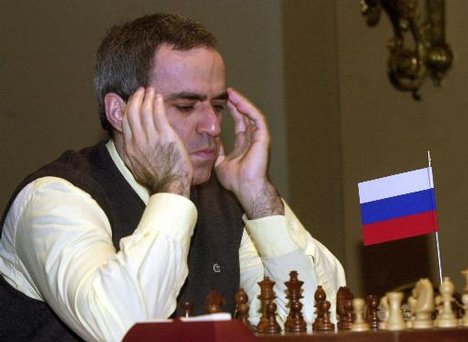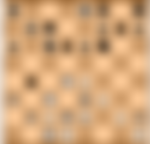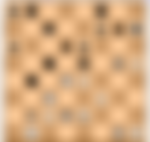

One of the best players of all time, Garry Kasparov was the undisputed World champion from 1995 to 1993 and was the classical world champion from 1993 till 2000. He was ranked number 1 from 1986 until his retirement in 2005, for a record 225 months out of 228 months during his chess career which is indeed a very big achievement. He achieved an ELO rating of 2851 in 1999 which was then recorded as the highest rating of any player until it was passed by Magnus Carlsen in 2013.
In 1997, he became the first world champion to lose to a computer under standard time controls, when he lost to the IBM supercomputer Deep Blue in a highly publicized match.
ADVERTISEMENT
Article continues below this ad

In 2005, Garry Kasparov retired after a sensational chess career. Let’s have a glimpse of one of his best games played in the last year of his superlative career. The game was played between Michael Adams and Garry Kasparov.
The game started with the Sicilian Defence: Najdorf variation with Kasparov playing with black. He often played this variation with black pieces and played aggressively.
This is how the board looks like after 11 moves with white to move.

The main idea here for black is to attack the queenside where white has castled and white just needs to oppose that by attacking the kingside of black. Whosoever clings with the position, sustains it and attacks in the right manner comes out as the winner and this is what Garry Kasparov was capable of doing.
White needs to attack the kingside by playing g4 then h4 and then make an attacking plan by placing the rook on the g file and then somehow try and defend on his queenside where black is attacking. This preferably should be white’s plan.
Let’s find out what happened next.
This is how the board looks after 21 moves.

- Nb3?
White blunders. Nb3 involves more good play for black with many tactical ties involved which is a plus for black.
Instead 22. h6 would have been a much better option with black 22… g6 and position fairly level.
Black played 22. …Nxc2!
- Nxc5
After 22…Nxc2, a white counterattack fails: 23.Bh6 Nxb3 24.Rxg7+ Kh8 25.Qg5 Rxb3 and White cannot break through.
23… Na3+!
If 23… Qxc5 then,
- Nxc5 Qxc5. Now 24.Qxc2 Bxc3 breaks through (the b2 Pawn is pinned) so 24.Kxc2 Rxb2+ 25.Kxb2 and White survives. Instead of 23…Qc5 interpose 23…Na3+ saving the N for the moment. If 24.Kc1 Qxc4+ consolidates, as does 24.Ka1 Qxc5: which leaves 24.Ka2 Qxc5 and if 24.bxa3 Bxc3 breaks through.
So 23…Na3+ was a splendid move by Kasparov.

ADVERTISEMENT
Article continues below this ad
Position after the 23 move.
- Ka2 Qxc5 25. Na4 Nc2 26.Kb1 Qa3
This sums it all. A splendid performance by Garry Kasparov.
ADVERTISEMENT
Article continues below this ad
In the words of Kasparov, “With each success the ability to change is reduced. My long-time friend and coach Grandmaster Yuri Dokhoian, aptly compared it to being dipped in Bronze. Each victory added another coat.”
ADVERTISEMENT
ADVERTISEMENT
ADVERTISEMENT
ADVERTISEMENT
